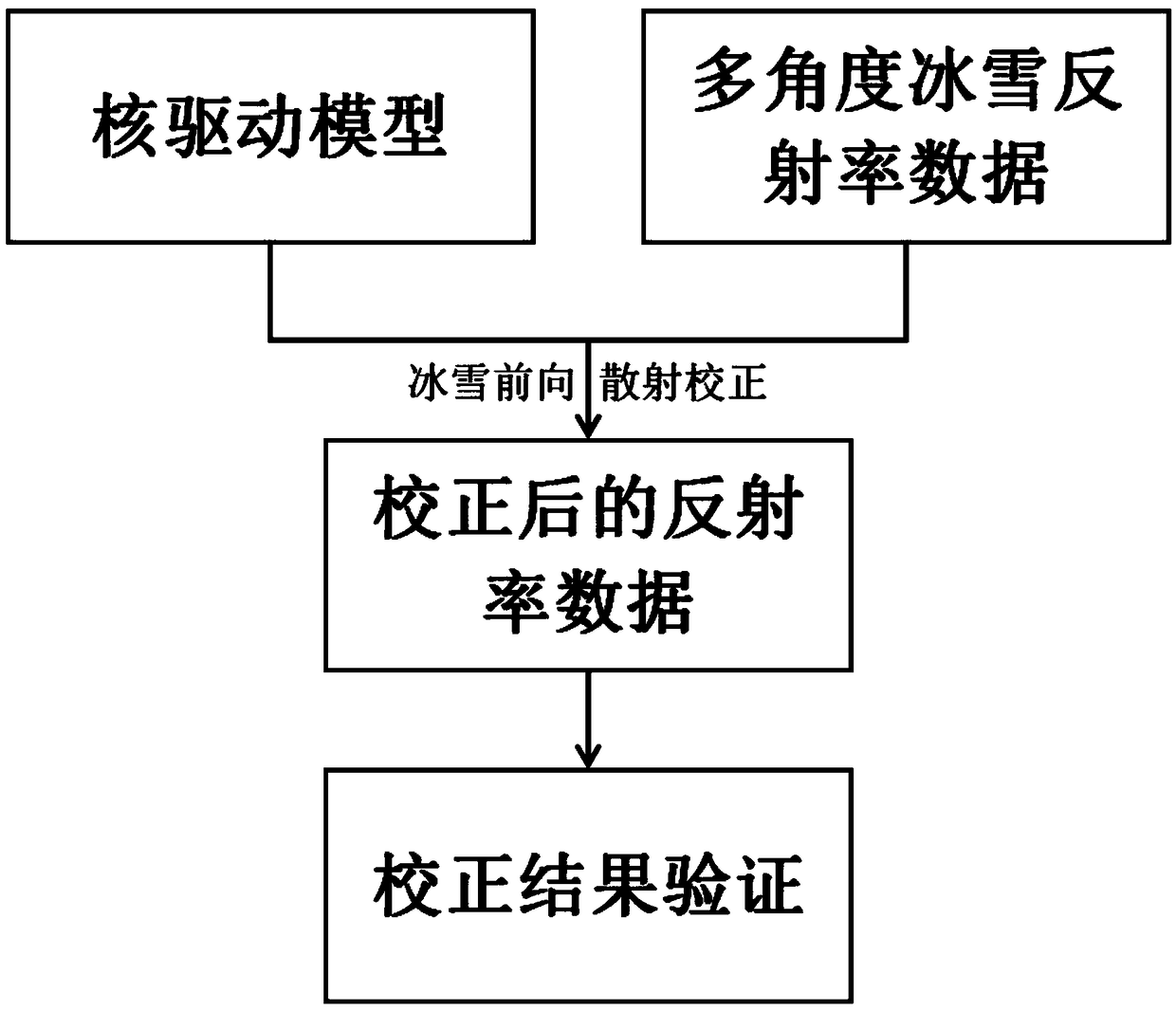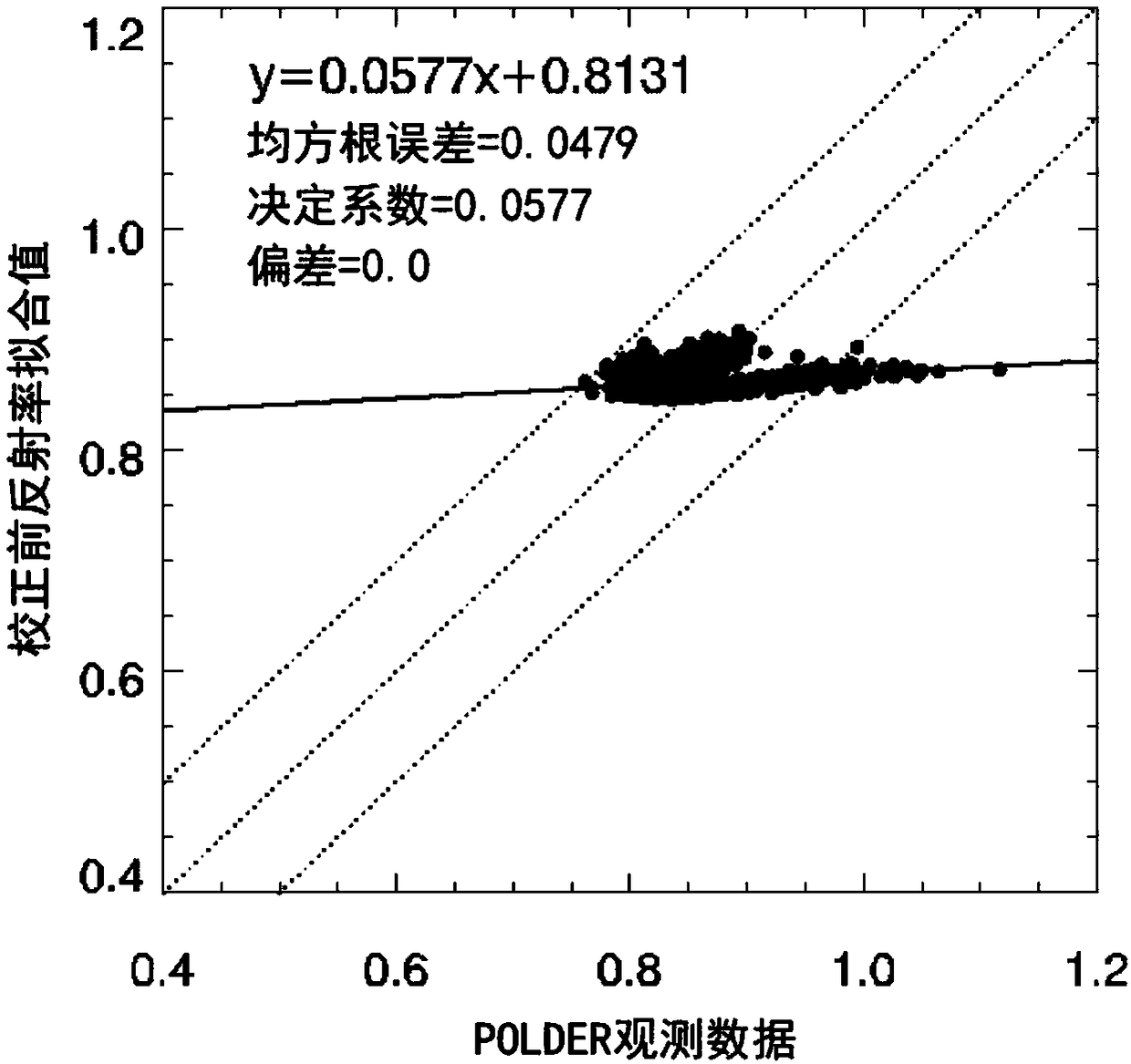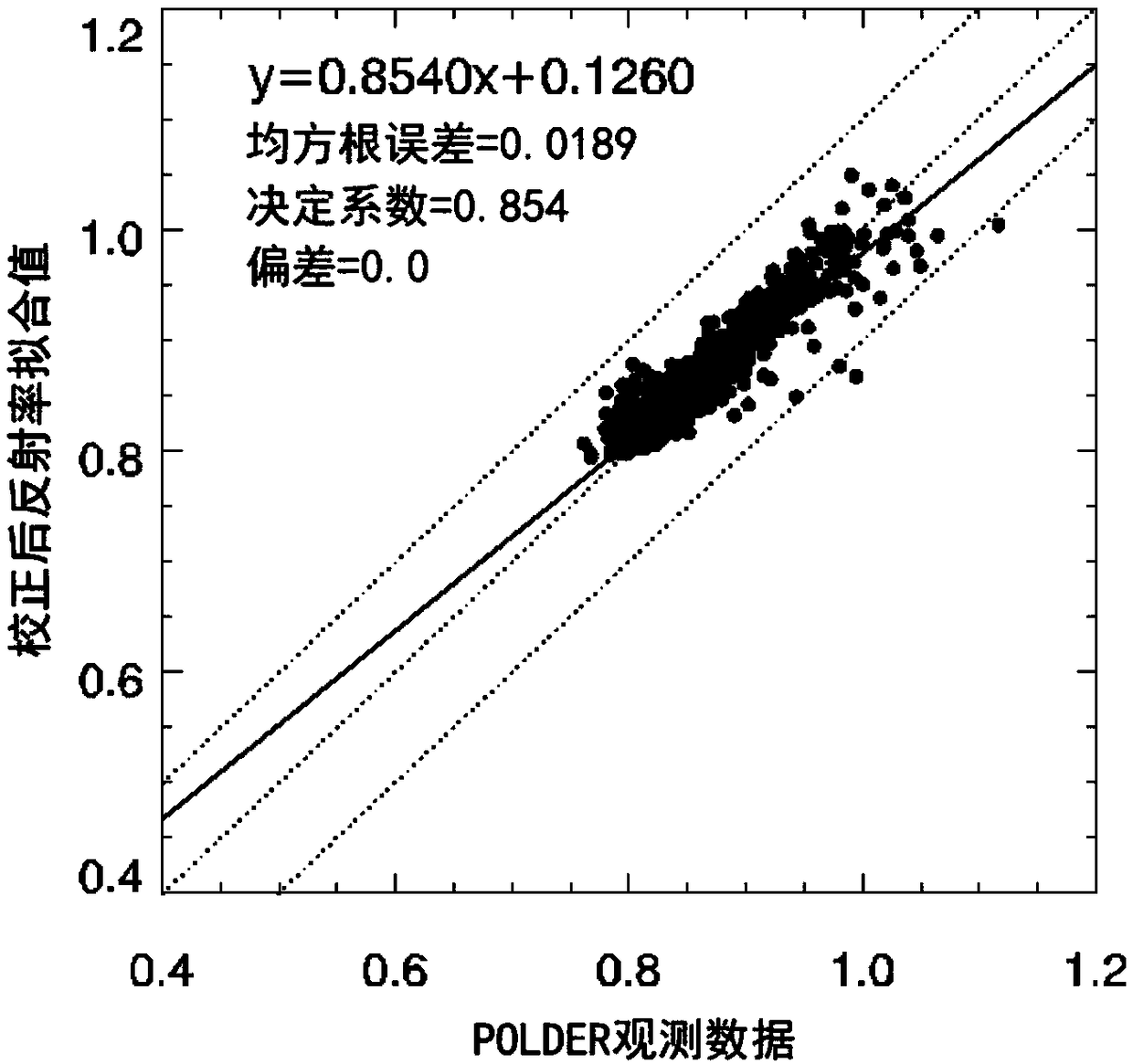Method for improving ice and snow forward scattering effect based on kernel drive model
A nuclear-driven model and forward scattering technology, applied in the field of spatial information, can solve the problems of unclear physical meaning and affect inversion accuracy, and achieve the effect of clear logic, improved fitting effect, and concise method.
- Summary
- Abstract
- Description
- Claims
- Application Information
AI Technical Summary
Problems solved by technology
Method used
Image
Examples
Embodiment 1
[0038] The operation was performed on a computer equipped with Intel’s second-generation Core i3-2100@3.10GHz processor, 16.0GB RAM, and NvidiaGeForce GT 630 graphics card. Taking POLDER's multi-angle ice and snow reflectance data as an example, according to figure 1 In the process shown in the process, the multi-angle ice and snow reflectance data is processed, and the fitting effect of the nuclear-driven model on the observation data is compared before and after the correction method is used.
[0039] figure 2 with image 3 The comparison diagrams of the fitting effect of the nuclear-driven model on the observed data before and after the use of the correction method are respectively. It can be seen from Figure 2 that the pre-correction method has relatively poor fitting results to the POLDER ice and snow reflectance data, and cannot accurately characterize the bidirectional reflection characteristics of ice and snow; and the data before correction ( figure 2 ) Compared to the...
PUM
 Login to View More
Login to View More Abstract
Description
Claims
Application Information
 Login to View More
Login to View More - R&D
- Intellectual Property
- Life Sciences
- Materials
- Tech Scout
- Unparalleled Data Quality
- Higher Quality Content
- 60% Fewer Hallucinations
Browse by: Latest US Patents, China's latest patents, Technical Efficacy Thesaurus, Application Domain, Technology Topic, Popular Technical Reports.
© 2025 PatSnap. All rights reserved.Legal|Privacy policy|Modern Slavery Act Transparency Statement|Sitemap|About US| Contact US: help@patsnap.com



